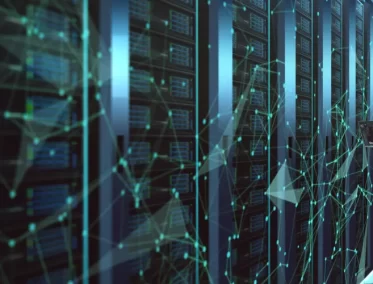For decades, the IBM i (iSeries/AS400) platform was the backbone of JD Edwards (JDE) environments. It was stable, secure, and dependable. But in 2025, what used to be a strength has become a strategic liability.
The signs are all around: hardware is aging, support costs are climbing, and the RPG talent pool is shrinking fast. Meanwhile, the business pressure to modernize, through automation, AI, and cloud-native integration, is only increasing. So why are many organizations still waiting?
In this article, we’ll explore the real risks of delaying your IBM iSeries modernization, and why moving to Oracle Cloud Infrastructure (OCI) is no longer just an option. It’s a necessity.

1. Aging Hardware and Escalating Support Costs
When your JD Edwards environment runs on IBM i (iSeries/AS400), hardware can become a ticking time bomb. While these systems were built to last, they were not designed for the elasticity, automation, or real-time demands of today’s cloud-first businesses.
And they’re expensive to maintain.
The Hidden Costs of Delaying IBM iSeries Modernization
- Maintenance and licensing premiums: Support contracts for IBM Power Systems and DB2 on IBM i are among the most expensive in the enterprise software world. Every renewal cycle brings steeper fees, especially if you’ve fallen out of mainstream support.
- Hardware supply chain issues: IBM Power9 and older systems are already showing signs of limited availability. Upgrades often mean sourcing used hardware or waiting on extended lead times.
- Unpredictable outages: Aging hardware comes with higher risk of failure. One failed component, and a lack of compatible replacements, can stall your entire JD Edwards instance.
According to sources, the cost of maintaining outdated infrastructure as a result of delaying IBM iSeries modernization increases by at least 15% annually as vendors reduce support incentives and push toward modernization paths.
This isn’t just about IT spend. It’s about the financial burden of doing nothing, and being forced into a rushed, expensive decision when something breaks.
Renewal Time Becomes a Trap When Avoiding IBM iSeries Modernization
Every time you renew hardware or OS licenses for iSeries, you’re committing to another 3–5 years of a static, closed platform. And you’re doing so at a time when the rest of the ecosystem is adopting:
- Auto-scaling compute
- AI-ready data platforms
- Containerized applications
- CI/CD pipelines and DevOps automation
The longer you delay IBM iSeries modernization, the harder it becomes to catch up.
2. Talent Shortages Put Continuity at Risk
One of the most critical and least visible risks of delaying IBM iSeries modernization is the shrinking talent pool. JD Edwards customers who rely on iSeries are increasingly struggling to find professionals with the deep knowledge needed to maintain, troubleshoot, and optimize these systems.
The reason is simple: most RPG and iSeries experts are nearing retirement age. And there’s virtually no new generation stepping in to replace them.
The AS400 Legacy System with a Limited Future
RPG, Report Program Generator, is the primary programming language used on IBM i. While incredibly powerful in its day, it has not aged gracefully:
- It lacks the modularity and flexibility of modern languages like Python, Go, or even Java.
- It doesn’t integrate easily with REST APIs or cloud-native frameworks.
- And it’s rarely taught in universities or coding bootcamps.
Result: you’re dependent on a shrinking group of high-cost, low-availability specialists to keep your business-critical systems afloat.
Knowledge Silos = Business Risk
What happens if your senior iSeries admin retires, goes on extended leave, or takes another job? For many JDE shops, that person holds the tribal knowledge of how the system operates:
- Custom integrations and batch jobs
- Workarounds coded years ago with no documentation
- Backup and disaster recovery procedures
- Security patching practices that are more “institutional memory” than documented process
In these environments, continuity risk is enormous. Even a minor issue could take days, or weeks, to resolve if the right expert isn’t available. In high-stakes sectors like manufacturing, finance, or supply chain, that kind of delay is unacceptable.
You Can’t Automate What You Don’t Understand
Modern IT is moving toward automation, observability, and agility, but IBM i environments are notoriously difficult to plug into this world:
- Legacy logs from systems like the AS400 legacy system don’t support modern observability tools.
- Manual tasks (patches, backups, performance tuning) are still the norm.
- Integrations with CI/CD pipelines and infrastructure as code are clunky at best.
The result? Technical debt and human dependency grow over time.
3. Innovation Bottlenecks Hurt Your Competitive Edge
In today’s market, IT isn’t just a cost center, it’s a growth engine. Whether you’re optimizing supply chains, launching digital products, or leveraging AI to predict customer behavior, innovation depends on one thing: flexible, modern infrastructure. And iSeries just doesn’t deliver that anymore.
AS400 Legacy System by Design = Limited by Design
IBM i was never intended for the cloud-native world we now live in. While it can run JD Edwards workloads dependably, it does so in a silo, cut off from many of the technologies that modern businesses rely on:
- No real-time analytics: Streaming data platforms like Kafka or Spark are nearly impossible to integrate without major custom development.
- No easy API connectivity: REST and JSON-based integrations that are standard in modern apps require time-consuming and brittle middleware layers to connect with iSeries.
- No native DevOps or CI/CD: You can’t push updates or automate deployments with modern pipelines like you would on OCI, AWS, or Azure.
The result? You’re constantly building workarounds instead of launching what’s next.
When Innovation Can’t Scale, Neither Can You
Even if your team has creative ideas, mobile apps for field service, AI-powered forecasting, embedded finance tools, they’ll hit walls trying to implement them on iSeries. Those walls include:
- Batch-based architecture: No support for event-driven or real-time updates.
- Rigid licensing models: Making it hard to spin up pilots or scale experiments.
- Vendor lock-in: Which discourages third-party integration and experimentation.
And while competitors are launching new services in weeks, your innovation cycles get bogged down by technical constraints and approvals for custom AS400 legacy system workarounds.
OCI Enables JD Edwards to Evolve
By contrast, Oracle Cloud Infrastructure (OCI) is purpose-built for running JD Edwards workloads with the flexibility and extensibility of modern cloud:
- Native support for JD Edwards EnterpriseOne and Orchestrator
- Seamless API and analytics integration
- Auto-scaling and high-availability zones
- Pay-as-you-grow cost models
With OCI, you don’t have to abandon JDE to innovate. You extend and evolve it.
Every year you delay your IBM iSeries modernization is a year you miss out on generous Oracle incentives, and the ability to modernize your JD Edwards ecosystem with lower risk and greater agility than you might think.
Many IT leaders assume that migrating off iSeries means rewriting their entire ERP or rebuilding decades of business logic. That’s no longer true. Oracle and its partners now offer tools, programs, and strategies that make the move smoother than ever, and even cost-effective.
Let’s break it down.
Oracle Incentives: Designed to Help You Move Faster With IBM iSeries Modernization
Oracle is actively encouraging iSeries customers to migrate JD Edwards workloads to OCI. That’s why they’ve rolled out a range of incentive programs that reduce both cost and risk:
- Universal Credits for cloud consumption
- Free Cloud Migrations for qualifying workloads
- Cloud Lift Services for hands-on guidance and support
- License Portability so you can bring existing on-prem licenses to the cloud
Depending on your situation, Oracle can cover a significant portion of migration-related expenses, especially if you’re moving to OCI in the next 6–12 months.
You Don’t Need to Rewrite Everything
One of the biggest myths about IBM iSeries modernization is that you’ll have to rip and replace your JDE environment. Not true.
With tools like Oracle GoldenGate, the right partner will help clients migrate their database from DB2 to Oracle with:
- Minimal downtime
- Zero data loss
- Real-time replication during cutover
For customers with complex integrations, expert partners use low-disruption strategies like:
- Staged transitions by module or function
- Hybrid environments during stabilization
- Lift-and-optimize rather than “lift-and-shift”
In short, you keep the logic and reliability of JD Edwards, while leaving the brittle, expensive iSeries infrastructure behind.
The Longer You Wait on IBM iSeries Modernization, the More Expensive It Gets
Delaying your IBM iSeries modernization doesn’t just mean more support costs. It means you’re missing a shrinking window of migration support, cloud incentives, and platform expertise.
Oracle and its ecosystem of partners have built frameworks to migrate JDE to OCI safely. But those frameworks are evolving toward AI, microservices, and GenAI integration, not backward compatibility with RPG or DB2.
Every renewal cycle you delay means:
- Less strategic support from Oracle
- Fewer internal champions (as RPG skills retire out)
- More costly pressure when something breaks and you’re forced to move urgently
Smart organizations aren’t waiting for a crisis; they’re getting ahead of it with a proactive migration roadmap.
5. Budget Uncertainty and Technical Debt Are Quiet Killers
If you’ve ever struggled to forecast next year’s IT budget because of iSeries, you’re not alone. One of the sneakiest risks of sticking with AS400 legacy system infrastructure is that it creates cost traps you can’t fully see until they explode.
The older your system, the harder it is to plan, predict, and contain costs.
Technical Debt: You Pay More for Less
Every workaround, patch, or delayed upgrade adds to your technical debt, the cost of doing things the old way rather than investing in a scalable, modern solution.
On iSeries, this shows up in many forms:
- Manual processes that require headcount instead of automation
- AS400 legacy system software integrations that break with every update
- Inability to adopt cheaper, SaaS-based tools because of rigid architecture
And technical debt isn’t just a developer concern. It’s a CFO’s problem, too.
Unpredictable Spend Becomes the Norm
With iSeries, it’s hard to model spend because:
- License costs are bundled in complex renewals
- Hardware maintenance spikes as systems age
- Emergency fixes eat into innovation budgets
- Dependencies create chain reactions of cost (e.g., a DB2 upgrade triggers changes in custom scripts, batch jobs, and backups)
You might not feel the pain in a single fiscal quarter, but over a 3–5 year horizon, the cost of staying can exceed the cost of IBM iSeries modernization.
Compare that to OCI, where:
- Compute is elastic; you pay only for what you use
- Oracle licensing can be portable or pooled
- Workloads scale up or down depending on business demand
It’s not just “cloud is cheaper.” It’s that the cloud is more predictable, more transparent, and easier to optimize over time.
CFOs and CIOs Are Aligning on IBM iSeries Modernization
As finance and IT leaders work closer together, budget predictability and risk reduction are now part of the same strategic conversation. CIOs can no longer justify supporting aging systems that consume:
- A large % of the IT budget
- Niche skills with volatile market pricing
- Infrastructure that can’t scale with growth
That’s why many are moving to OCI, not just to save money, but to take back control of their IT roadmap.
It’s Not About Replacing JDE, It’s About Future-Proofing It
Staying on IBM i isn’t the safe, stable option it once was, it’s a strategic liability.
Every year you delay your iSeries exit:
- The talent pool shrinks
- Innovation grinds to a halt
- Technical debt snowballs
- Migration incentives diminish
- And unplanned costs grow harder to control
Meanwhile, your competitors are moving forward, adopting flexible, modern architectures on platforms like OCI that allow JD Edwards to evolve instead of survive. You don’t need to rip and replace. You need a plan.
Why Partner for Your IBM iSeries Modernization?
The right partner will help you safely exit iSeries and land on modern, future-ready cloud infrastructure. They will understand the nuances of:
- How to migrate without rewriting everything
- How to minimize disruption and risk
- How to align Oracle incentives and license strategies to reduce TCO
- How to future-proof your ERP with AI-ready, API-connected architectures
Build your IBM iSeries modernization plan with the right partner, the one who will strategize on your timeline, with your business goals in mind.




